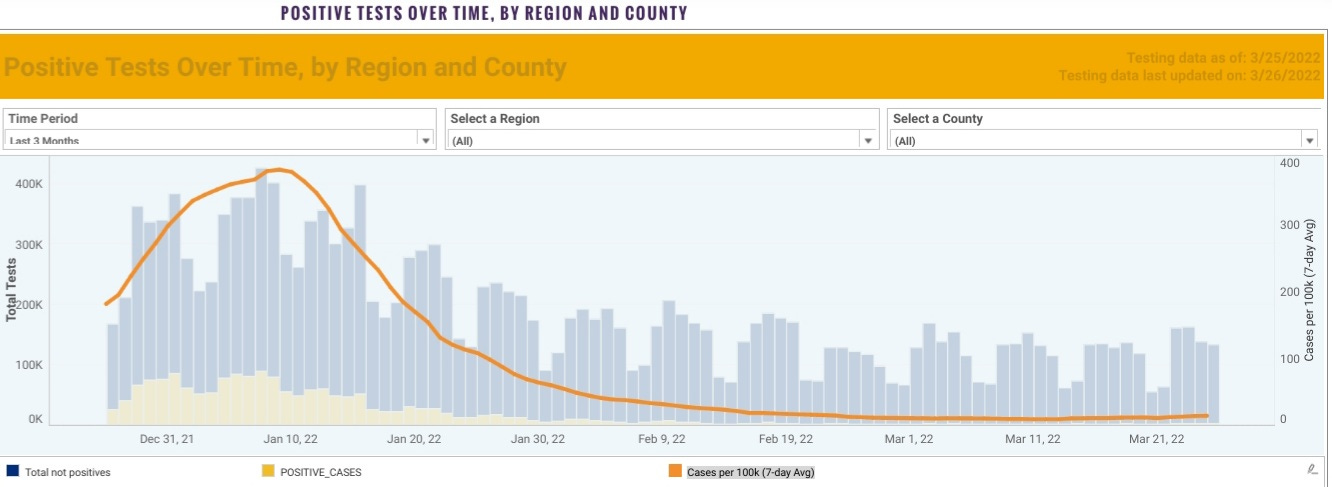If you want to derail a narrative thread, check the data.
If CDC Director Rochelle Walensky says BA.2 is on the rise in your area, check your state or local COVID-19 dashboard.
According to Ms. Walensky, the Omicron BA.2 subvariant is becoming more prevalent in the northeastern United States, and she hints at a fresh “wave" of infections.
"We have started to see an uptick in some cases in some areas, as well as an uptick in some of our wastewater surveillance. So these are areas that we're watching very, very carefully. We've seen some very small increases in hospitalizations in some areas, but not in severe disease, not in ICU stays," said Walensky.
"We've seen about 35% of BA.2 across the country. But in the Northeast region, we've seen it at about 50%. It is one of the reasons we're watching so carefully," she continued.
She says while BA-2 is more transmissible, the disease itself doesn't appear to be more severe or vaccine-resistant than the original omicron strain.
However, here's what the New York State dashboard shows for COVID-19 case counts and trends:
Here's Massachusetts:
Here's New Jersey:
Given that BA.2 has been documented in this country since mid-December of last year, the state level data leaves us with a question: If BA.2 is more transmissible, why isn't it transmitting?






BA.2 is spreading in many areas, overtaking BA.1. In many most locations it is probably running out of people to infect - those who have either no prior immunity or immunity derived from an earlier variant infection or the quasi-vaccines which are based on early 2020 SARS-CoV-2 spike proteins.
All the reports I have read but one state that BA.2 seems to be no more or no less virulent than BA1. The exception is a U.K. Health Security Agency (UKHSA) report https://assets.publishing.service.gov.uk/government/uploads/system/uploads/attachment_data/file/1063424/Tech-Briefing-39-25March2022_FINAL.pdf which estimates the risk of hospitalisation with BA.2 is 0.94 that of Ba.1. However, the confidence interval is 0.88 to 1.00, so this is a rough indication of lower virulence, in a given population at a given time, rather than something which can be reliably extrapolated to all people.
Because at home tests don't get reported anywhere and you just get a sick day from work when you get the sniffles. Does anybody actually go to a home depot shed in a gas station parking lot (I mean official state of the art testing facility) anymore?
Testing is only important when you want to win an election.